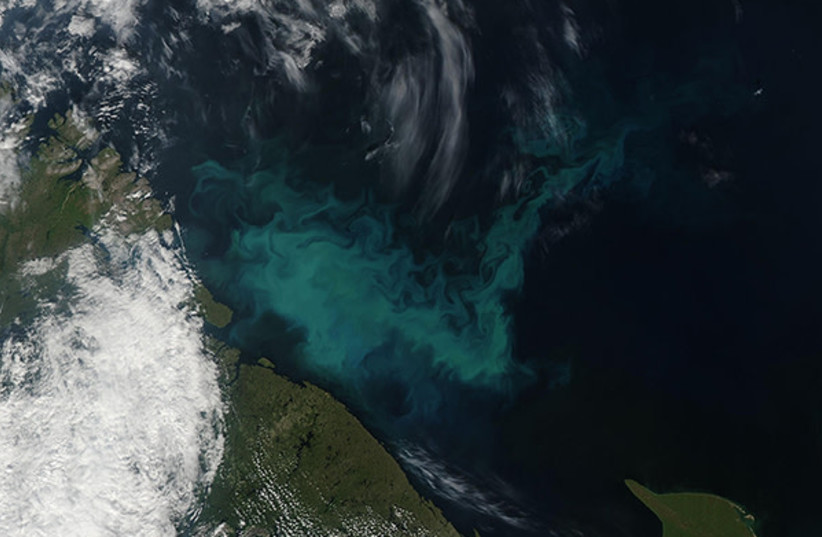Could a NASA space mission unravel the mysteries of Earth’s climate?
The mission is meant to deliver first-of-its-kind views of the phytoplankton -- microscopic plant-like organisms -- that convert carbon dioxide into cellular material to feed oceanic life.
A NASA mission slated to leave Earth early next month could help scientists unravel the mysteries of Earth's climate.
"We're finding ourselves at a critical juncture where shifts in the global Earth system, including climate change, are accelerating, and the impacts are growing in frequency and intensity," said NASA Deputy Administrator Pam Melroy. "Just last week, NASA announced that once again, the average surface temperature on Earth reached record highs last year.
Data confirms climate crisis
"This data confirms what billions of people worldwide have experienced over the last year. We are undeniably in the midst of a climate crisis. Our planet is undergoing transformative changes from the surge in extreme weather events and devastating wildfires to the rising sea level."
As such, NASA will launch its Plankton, Aerosol, Cloud, ocean Ecosystem (PACE) mission no earlier than 1:30 a.m. on Tuesday, February 6, on a SpaceX Falcon 9 rocket from Space Launch Complex 40 at Cape Canaveral Space Force Station in Florida. The mission, said Melroy during a NASA conference call on Wednesday evening, promises to deepen scientists' understanding of how microscopic oceanic and atmospheric particles impact Earth's climate and people's lives.

The mission is meant to deliver first-of-its-kind views of the phytoplankton -- microscopic plant-like organisms -- that convert carbon dioxide into cellular material to feed oceanic life.
"This microscopic aquatic universe provides the backbone of our critical fisheries and plays a major role in drawing carbon dioxide out of our atmosphere," said Melroy. "But it can also introduce harmful algal blooms that sometimes close beaches … and contaminate drinking water."
In addition, PACE aims to unveil the complex mechanisms through which aerosols and clouds impact the absorption and scattering of solar energy by Earth. Melroy said aerosols play a crucial role in cloud formation that affects the behaviour of the weather system.
"Unravelling this very complex interplay could provide us with invaluable insights into the occurrence of extreme weather events. Moreover, such knowledge could guide policy decisions to mitigate their effects and ultimately enhance our ability to prepare for and respond to those events," she said.
PACE is among several earth science missions led by NASA. However, Jacob Richmond, NASA's senior communications manager, said it holds a unique significance as it delves into the realms of air and water – "two elements that are fundamental to life itself."
He said that many of the earth science mysteries that exist today reside in those two domains, and many of them are invisible to the naked eye, even with a microscope.
"We're going to send instruments up to space to look at these fairly invisible things," he said.
PACE's goals
Specifically, PACE aims to address issues such as understanding the influence of El Niño and water temperature on biological productivity, assessing the impact of rising sea levels on the dynamics of ocean life, unravelling the mechanisms behind carbon dioxide exchange between the ocean and atmosphere, exploring the interplay between ocean biology and cloud formation, and discerning how aerosols contribute to fueling ocean biology, said Karen St. Germain, director, of NASA's Earth Science Division.
"We'll be able to get after some of those very challenging questions," she said.
The PACE data will be combined with data from other NASA missions and will also be used to support practical applications that will benefit society, explained PACE applications lead Erin Urquhart Jephson.
Jephson said that PACE would work with the global community of scientists, academics, public health practitioners, and industry professionals to apply PACE data to meet practical societal needs.
"The goal of the PACE Applications Program is to foster new partnerships and out-of-the-box thinking that will generate inventive solutions to support people like you and me," Jephson said. "The data produced by PACE will help us monitor water resources, things like recreational water quality, fisheries, and harmful algal blooms, as well as air quality, and it'll help us respond and mitigate the risk of natural disasters, including floods, volcanic and wildfire events."
PLEASE RECOMMEND THIS PAGE & FOLLOW THE SPUTNIKS ORBIT AT HTTPS://DISQUS.COM/HOME/FORUM/THESPUTNIKSORBIT-BLOGSPOT-COM



No comments:
Post a Comment